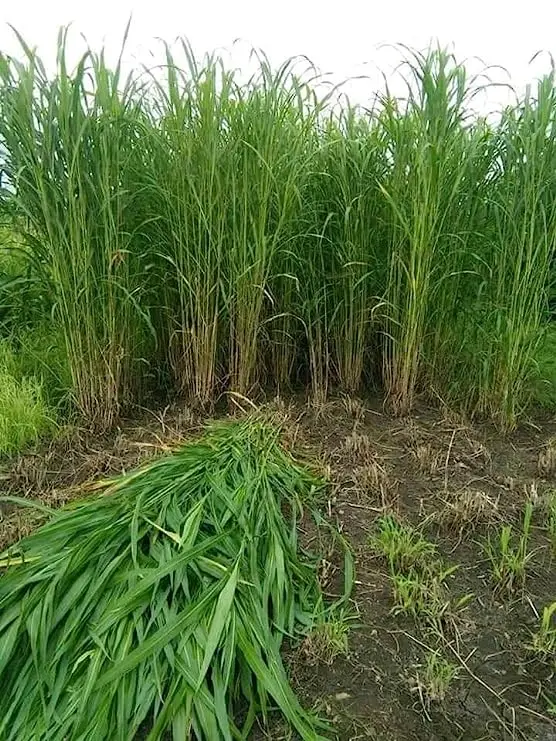For Enquiry
+91 9830743420
Giant King Napier Grass is a fast growing, high yield, hybrid grass that grows in a variety of soil conditions. Giant King Napier Grass is perennial and can be harvested several times per year.
Giant King Napier Grass is very fast growing and is a short rotation crop that can be harvested in the first year, compared to miscanthus ,switchgrass, bamboo and other crops that have much lower yields, and cannot be harvested until their second, third or fourth year of growth. Once Giant King Napier Grass is planted, it can be harvested at 3 feet tall (1m) for biogas production after 40 days, and subsequent harvests are every 25 to 30 days.

Giant King Napier Grass is best grown in tropical and subtropical regions with more than 100 days of sunshine per year, and more than 32 inches (800 mm) of rain per year (or irrigation). The fertilizer requirements are modest and no pesticide is required in the current cultivation
For other applications such as pellets or biofuels, it is harvested at 13 feet tall (4 m) after 195 days and subsequently every 120 days. The high rate of growth of Giant King Napier Grass can provide a continual supply of biomass year-round.
The yield of Giant King Napier Grass in a tropical area with a 12 month growing season is 167 tons per acre (375 metric tons per hectare) of fresh grass at approximately 70% moisture. The dry mass yield is 45 tons per acre (100 metric tons per hectare).
The energy content of Giant King Napier Grass is excellent at 7900 BTU per bone dry pound (4400 kcal per kilogram or 18.4 MJ per kilogram). The proximate, elemental, and ash analysis shows that the properties of Giant King Napier Grass are very close to corn straw (Stover) which is the rest of the corn plant after the ear of corn is harvested. Biogas production from Giant King Napier Grass is also excellent.
With competitive energy characteristics combined with multiple harvests per year, the energy output, or energy yield, of Giant King Napier Grass per acre per year is three to four times greater than other grasses. As a result, Giant King Napier Grass cultivation offers material productivity benefits and therefore lower cost biomass feedstock for energy production, biofuels and biomaterials.